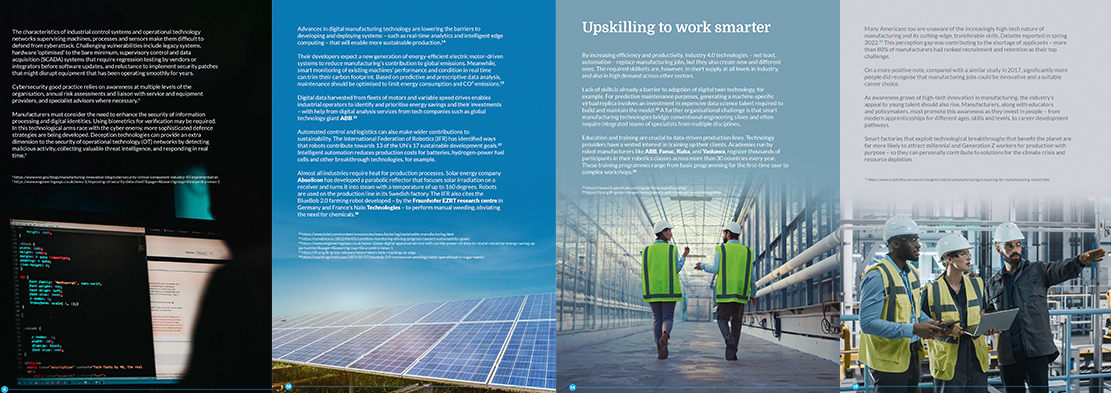Are you interested in how transformative technologies are driving a sustainable and connected future for the industry?
Throughout history, industrial revolutions have been driven by transformative technologies. From steam to electricity to computing, each era brought greater productivity, mass production, and automation. Now, Industry 4.0 is connecting the digital and physical worlds in an intelligent loop through real-time communication and data analysis.
This is enabling more flexible production and personalisation of products at mass efficiency. The progress fueled by productivity and profit must also balance the needs of people and the planet if it is to be sustainable. Therefore, the mission of innovators for the Fifth Industrial Revolution is to fix the problems and consequences unleashed by the First.
Our previous Business Insight Note focused on the technologies that are facilitating the transition to a smarter, fully connected form of manufacturing. In this text, we will examine the societal dimension of a values-driven Industry 5.0 techno-social revolution.
As the world faces depleting natural resources and a rising population, the manufacturing industry must learn to minimize, reuse, and recycle materials and waste, as well as work with alternative materials. Products and processes must be redesigned and reengineered not only for more efficient resource management, but also for energy efficiency and carbon neutrality. This sustainable economy will be circular and knowledge-based.
By reading this document, you will gain valuable insights into how the industry can balance productivity and profit with social and environmental responsibility. Join us in shaping a better tomorrow by filling out the form below to receive your copy now.




